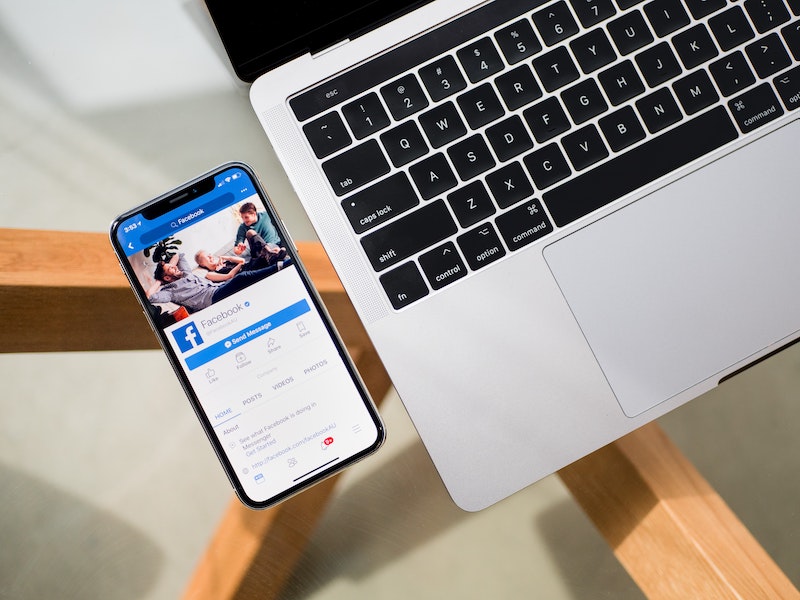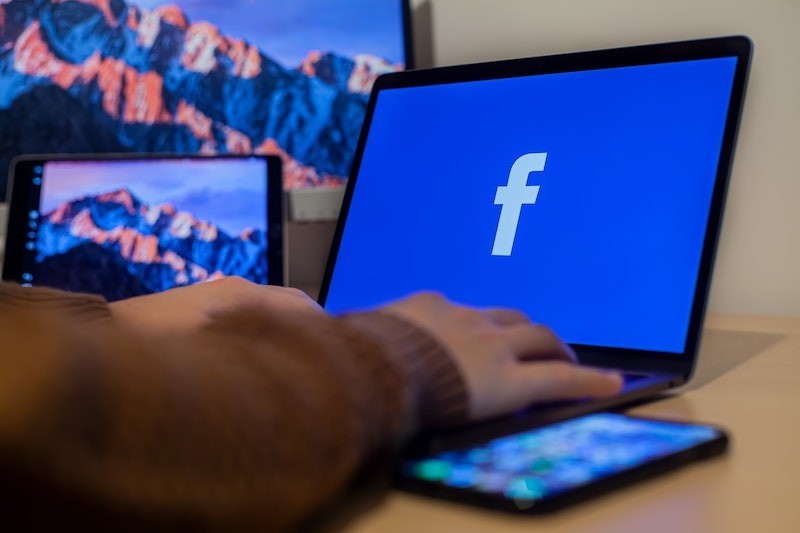Online advertisements, including organic and paid Facebook ads, are currently the most efficient and effective means of reaching wide target audiences to help grow your business and brand. In this article, we’ll discuss the differences between organic ads and paid ads such as with Facebook. We will also cover their different benefits, and how to succeed in your professional goals with each.

Table of Contents
What Is Paid Media Marketing?
Before we discuss what paid Facebook ads are and how they function, let’s discuss what paid media marketing is in general. Paid media marketing is a paid advertisement strategy similar to paid Facebook ads but without Facebook-specific assistance, connections, and exposure. Paid media marketing examples are social media ads, Google Ads, print ads, billboards, and television commercials. It is any paid-for marketing and advertising done on external websites or sources.
In this marketing strategy, a way to cut down on costs is by marketing through any owned media. Owned media is any channel of media owned and controlled personally or by a company you are an essential part of. It is a cheaper option than solely external marketing efforts. It is also more desirable due to the increased control of the content. Similar to organic marketing, paid media marketing through owned media does require increased efforts including consistent personal engagement and management to achieve success. Examples of owned media are organic social media posts, company websites, and company blogs.
What Is a Paid Facebook Ad?
When marketing and growing your business through paid media advertisements, one outlet to consider is Facebook. With paid Facebook ads, individuals pay for their own ads and the ads are in their own words. They also choose the images and audience for their ad campaigns. In other words, they maintain full control over the creation and management to achieve their unique business goals and objectives. These ads can be helpful for increasing exposure to a company and/or website.
Tools such as Facebook Audience Optimization help advertisers understand and target the right audience. The tool also allows you to add interest tags to help engagement and view page insights. In contrast to other forms of paid media marketing, a Facebook ad combines the external marketing efforts of paid media such as pay-per-click, paid placement, display ads, and branded content advertising with the unique services of Facebook advertising. A paid Facebook ad can include the social media content of Facebook friends connected to the business, its employees, and affiliates.

Facebook Ads Manager
Facebook Ads Manager is the outlet for designing Facebook ad content. Through it, you can manage the locations and scheduling of individual ad postings, track the performance, and the responses to any currently-running ads. The Ads Manager also works with Facebook’s affiliates – Instagram, Messenger, and Audience Network. There is also an Ads Manager app for both iOS and Android devices for on-the-go tracking and maintenance including budgeting, edits, and schedules.
Key features include selecting the parameters of ad campaigns. For example, you can select an objective to suit unique professional needs, fine-tune how an ad will look across the different devices, and establish the specifics of chosen target audiences. Individualization to the right target audience for a given ad is essential to success. An overall budget can also be set, including the daily and long-term budgets of a given ad. The ability to extend an ad to Facebook’s different apps has also been automated, which can further increase exposure and performance. Editing multiple ads is possible, including pausing, relaunching, and duplicating different campaigns. Dynamic creative is another provided feature, which can combine videos, images, and text components toward what will maximize audience responsiveness. Creating an A/B test is also possible, used to show the suggested ideal target audience, placements, delivery optimization, and product/creative sets for individual campaigns.
Budgeting for a Paid Facebook Ad
A Facebook ad campaign can have any size budget. An ad’s unique ad auction determines its cost, including the overall amount spent and the cost of individual results received. Ads with defined target audiences matching the viewer then compete automatically. The closest ad match to the viewer’s demographics wins the opportunity to appear on their feed. The winning ad is always that of the highest total value of three factors. These factors are the bid (what an advertiser is willing to pay to reach their desired outcome), estimated action rates (the probability of whether or not a given viewer will engage with the ad), and ad quality. Examples of poor ad quality attributes are withholding information, sensationalized language, and engagement bait.
The budget itself determines the amount spent and is always adjustable. An ad’s bid strategy determines the cost per result. The three types of bidding offered are spend-based, manual, and goal-based. Spend-based focuses on full budget spending to achieve maximum results. Focus can be on the lowest cost possible for a given outcome or it can be on the highest value, spending a budget on maximum value purchases. Manual bidding focuses on individual bid control and setting a maximum bid, or bid cap. This differs from Facebook dynamically bidding with adherence to value or cost goals. Goal-based bidding focuses on setting the desired cost or achieved value. It involves a cost cap (maintaining desired costs regardless of market conditions), and minimum ROAs (return on ad spend), targeting a minimum desired amount returned on ad spend for individual bids.
With paid Facebook ads, another service is the automatic bid. In the event of bid amount uncertainty, it places an automatic bid with the intent to maintain the overall budget evenly throughout the ad’s run. A set campaign and/or a spending limit also negates overspending and better ensures the achievement of budget and revenue goals.

What Is an Organic Marketing Strategy?
An organic marketing strategy is a more hands-on, natural marketing strategy that brings ad traffic over time. It is essentially a more time-exhaustive process of advertising and personal ad management. But, it can also cost less upfront as a trade. You are not paying for the services and assistance that are part of a paid marketing strategy from an established provider. The concept of organic marketing is less direct marketing than paid advertisements, but rather general exposure and a connection between the thing being marketed and the desired audience, bringing them the knowledge and resources to pursue the object from this point themselves given strong encouragement and object endorsement.
The personal input of the advertiser can also determine the success of an organic marketing strategy. More individually-chosen methods determine the achievement of advertising ends. There is the ability to create more personalized advertisements, including customization and running analytics for performance. There can be some financial investment in this strategy, however. It often comes from any software used. For example, Hubspot to aid inbound sales and customer service, MailChimp for email lists, and Buffer for organic social media post scheduling. Email marketing can also valuably increase your ROI with many selected outlets and companies using software to effectively measure the email marketing profitability.
What Goes Into an Organic Marketing Strategy?
An organic marketing strategy includes case studies, online posts such as to Twitter, Facebook, and Instagram, and guest posts. Guest posts are unpaid posts on others’ websites with the goal of directing traffic back to you. Backlinks, advertisements, and objects marketed also serve as valuable aspects of this marketing strategy. Guest posting can be as simple as typing your industry keyword and the words “guest post” into a search engine. Positioning yourself as an authority in your field and/or toward the object of your marketing in the guest post can help increase the outcome success of the referral.
Determining factors for the success of an organic marketing strategy overall includes awareness of SEO optimization, high and consistent social media account activity and outreaches, customer engagement, and content that is mobile-friendly. Much of the same factors also apply to the success of paid marketing strategies. It is worth noting that whichever marketing strategy you choose first, adjustments are always possible. In fact, you should adjust in response to the results of monitored ad performance.

Choosing Which Is Right for You
There are notable pros and cons to consider when choosing between an organic or paid media marketing strategy and in making informed adjustments along the way, given engagement and revenue results. You can be successful in either strategy with diligence, consistency, and adherence to an audience. SEO Design Chicago is here to provide clarity and expertise toward the success of your media advertisements.
FAQ:
- How much does a paid Facebook ad cost?
- How do you use Facebook Ads Manager?
- What is paid media marketing?
- What is organic marketing?
- How do I maintain a paid Facebook ad budget?


Contact Us Today!